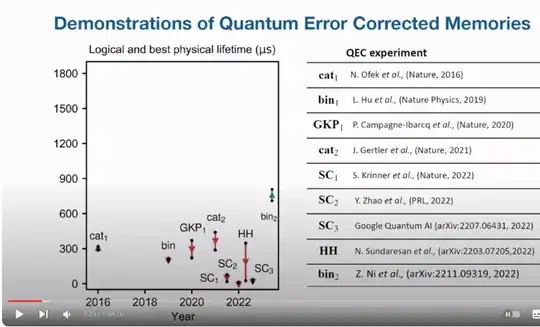Consider Wiesner's quantum money scheme. With today's devices and today's error correction and mitigation schemes, how long can we hold $n$ logical qubits such that they are all (logically) in a product state, with each logical qubit being drawn uniformly at random from one of the BB84 states $\{|0\rangle_L,|1\rangle_L,|+\rangle_L,|-\rangle_L\}$, say, for $n=10$ or $20$ or $30?$
In Wiesner's scheme:
- We don't need to act fault-tolerantly on the logical qubits, as there's no two-qubit computation being done on the logical qubits in Wiesner's scheme;
- In particular each qubit is prepared and measured in one of the four BB84 basis states - thus assuming easy preparation of $|0\rangle_L$, the only relevant logical single-qubit gates are the Hadamard and the X/NOT gate (no arbitrary phases or T gates are needed); and
- Because one whole bill can be written as a product state over all logical qubits, indeed, I can imagine that the $n$ qubits in a bill are prepared and distributed over multiple processors - one processor holding one (logical) qubit, another holding another, etc.
